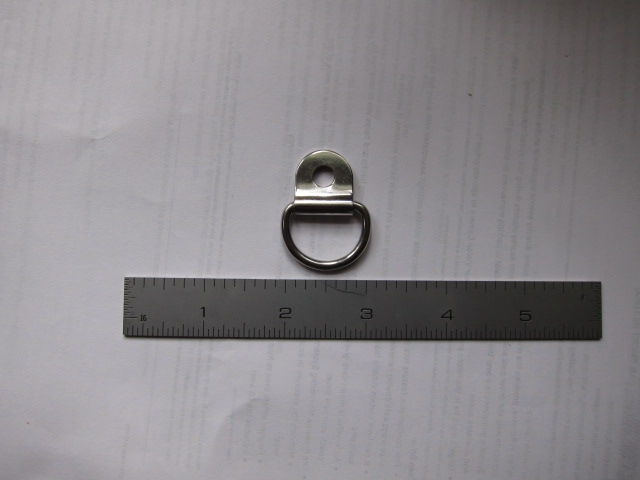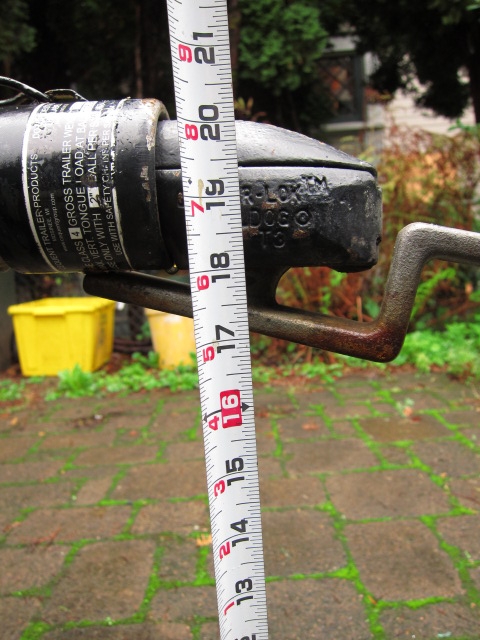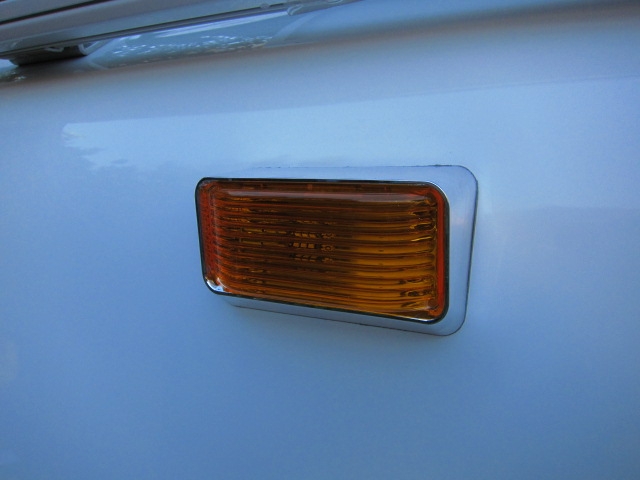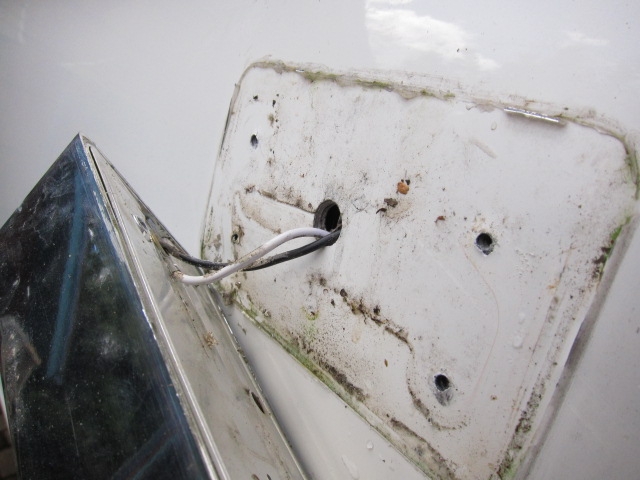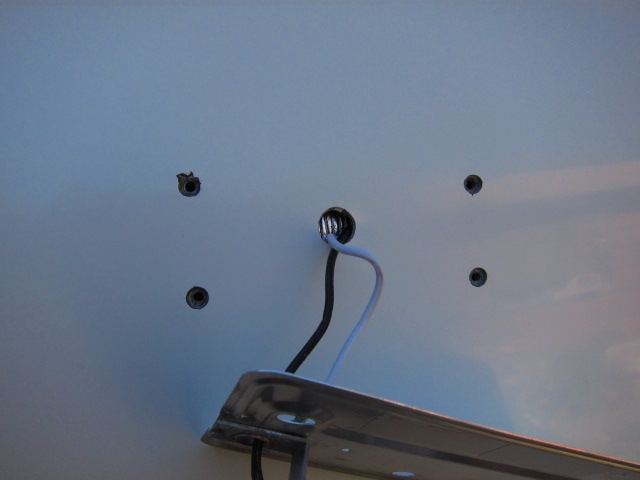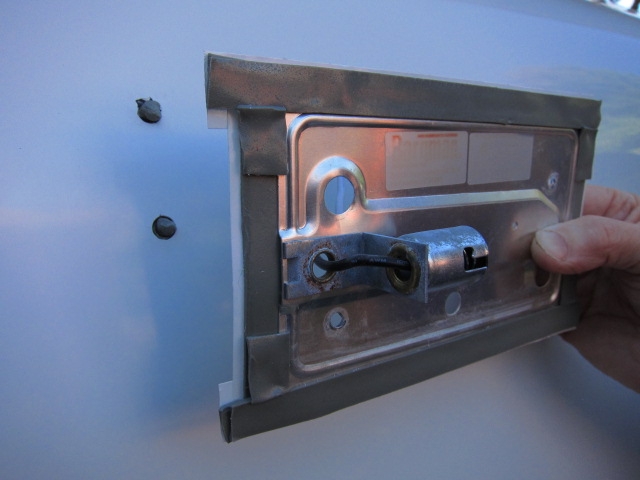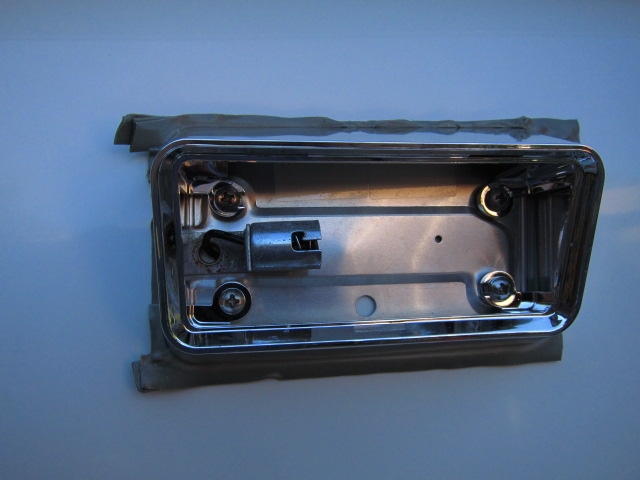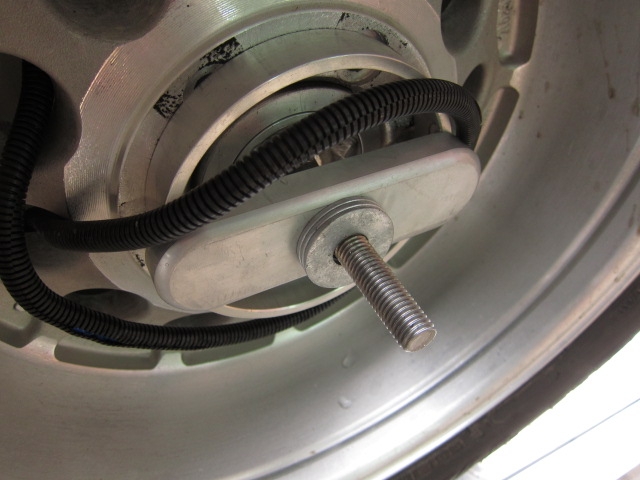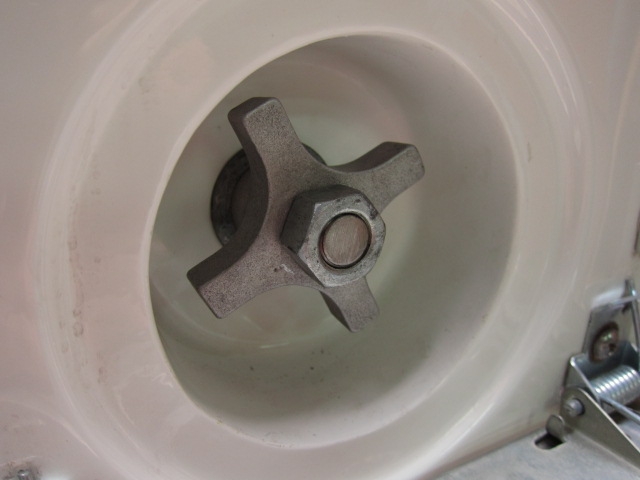-
Posts
373 -
Joined
-
Last visited
-
Days Won
20
Everything posted by DavePhelps
-
Sorry that didn't fix you up. Should have looked at the video first.... I'm pretty sure that audio between the TV and the Furrion is through the HDMI cable (someone please correct me if I'm wrong). If you are still not getting sound and have a connection at the TV, then the connection at the Furrion needs to be checked. On my Elite, there is no access port in either of the overhead storage compartments next to the Furrion. Not sure about the Elite2. You may have to remove the Furrion's trim ring to access its mounting screws and remove the unit enough to inspect all the connections. Never done this so can't advise. I'd call Oliver about the best way to proceed. Good luck! Dave
-
OK, try this. I also have a 2015 Oliver. You will need the HDMI cable. Check the back of your TV for it. Turn on your TV and with the TV remote, press the MENU button. Scroll over to AUDIO, then scroll down to TV Speaker, then turn the TV speakers OFF. Go back to main menu. Scroll over to SETUP, then to AUDIO OUT, change from Variable to FIXED. On your Furrion (not the remote) set Sterio to AUX. That's what I did and it works great. Use the A, B, C buttons to select which of the trailer speakers you want to use. Hope this works for you. Dave
-
So if there was a small amount of water in the tank, say an inch or so and it froze solid, would that really hurt anything? There is plenty of room for expansion. I just wonder about this as we use large plastic tanks (250 gallon) for watering trees and there is always some water in them through the Winter. It does freeze here, though not probably as hard or for as long as other parts of the country, and the tanks are fine come Spring. I just hate having to put AF in the tank the way it is currently designed. It's just too hard, if even possible to get a complete drain and flush. I know they say it's non toxic but, well, I prefer not to use it in that location. Traps yes, tank no. The rest of the water lines I carefully and thoroughly blow out with compressed air. Dave
-
Wow, quite a thread John. Thanks for diving in to this. Still not sure why you decided to swap the intake/outtake lines out. Wouldn't it have been just as easy to put the new siphon tube in the lower hole? Or were you worried (as I am) about access down there. Curious to see how well your setup will work when it comes time to drain the tank. You may have to get under you Ollie and suck on the exterior drain port to get it all going! But hopefully not. Curious also about your pic of the factory spin weld fitting. It appears to be of a different design than the one that was sent to us. Can't figure out why there would be any tank showing inside the fitting as there has to be that collar on the weld side of the fitting to key in the fitting for spinning. That collar is larger than the FPT part of the fitting. To have to file the tank out to get the tube through is a real PITA. I asked Oliver about months ago as I was worried about this very thing. They assured me that 1/2" pex or copper would go through. Hmmm. Finally, do you think in hindsight that you could have gotten a copper bend in your tank instead of the PEX bend you made? I'm a little worried about the PEX in a compression fitting that is unsupported by the little support sleeve that came with that fitting. I think copper would better resist deformation by the compression ring in a pass through situation. But perhaps with the pressures we are talking about, the PEX will do fine. Thanks again for the write-up. It must have taken a bit of time and is appreciated. Dave
-
Hey John, Thanks for posting this! I was just getting ready to do the same after receiving my "kit" a few days ago. I received the same stuff you did. No instructions or diagram. No spin weld tool or suggestion of where to get one, or tank prep/tips for installation. No mention of the best place to weld the fitting on my tank (Elite1). No mention of the notch in the base of the pickup tube someone posted a picture of.... Also, doesn't that compression fitting still need to be drilled out so the pex can pass through it? Yes, I am a wee bit frustrated. Guess I'll be calling in about it soon. Still hoping to somehow use the original outflow fitting. My thought is to place the pex in the rt. angle bracket they sent and gently heat it up so it maintains that shape. Then slide it through the comp fitting and attach it to the tank. Access is the big issue for me. But spin welding the fitting won't be a piece of cake either in my little trailer. Maybe with a laminate router there is enough room.... Am I going to be a happy camper when this project is done! Dave
-

Full cabin-length clothes line: need your ideas please!
DavePhelps replied to John E Davies's topic in Ollie Modifications
John, How about a simple D-ring like this. Mount two of them and rig up a length of parachute cord with a sliding tension knot at one end. You could add hooks or tie directly to D-ring with a quick release hitch on one side and your tensioning knot on the other. Maybe too backwoods for you but how often will you be setting it up? This D-ring is stainless steel with a welded ring so very strong if properly mounted. Dave -
Glad you heard back from Oliver. I would still recommend weighting up your Taco to 360+ pounds in the rear and measuring the drop. I suspect it will be more than 1". Consider how much weight you plan to carry in the bed as well as that will drop it even more. Sounds like you're zeroing in on it though. Good luck! Dave
-
Reed, This is the exact truck I have been drooling over!! Curious if you took the 6.2 out for a spin, and more curious to hear how the 5.3 does pulling your trailer. I was pretty set on the 6.2, but if the 5.3 is up to the task, then the mileage would be better. I've heard that the new 8 speed transmission has greatly improved the performance of that engine (well, both of them actually). Congrats on your new rig! Dave
-
Those are the same numbers I got from Oliver. They were not correct. My trailer is on a flat and mostly level surface. Equal distance from front and rear of frame to ground. Mine is a 2015 Elite so no major difference in suspension that I know of. Here's the pic: All I can figure from what Anita said is that they are allowing for bumper drop with their ball height. This is a useless number as all TV's will have different levels of squat. Hopefully some other Elite owners will chime in to confirm but we are in the minority. Where's Bugeyedriver when we need him! Dave
-
19.5" for me. Top of ball (measured from trailer hitch). Frame of trailer equal distance from ground front to back. This is also on a level surface. Dave
-
Skalywag, I'm wondering about that 24". Did you measure from your trailer frame to the ground both front and rear to make sure they are equal before measuring your ball height? 24" sounds pretty high to me. Guess I better double check my measurements! Dave
-
I have the Elite, and with the trailer perfectly level, top of ball to ground is 19.5" (measured from the bulldog hitch) Not sure of your TV but your rear end will drop a bit from the tongue weight, which I am told is around 350 pounds. What I did was to get a few friends whose combined weight was close to that and stand on a spare ball mount I had for a different trailer (you could stand on the bumper but add a bit more weight to allow for loss of leverage, as the ball will be further out from the rear axle than the bumper). Then I measured to the top of the receiver tube. With this info, you can calculate the rise or drop of the ball mount you will need. Should get you pretty close. If you're getting a WD hitch, then that could possibly change the numbers, but the 19.5" remains the same. Strive to get the trailer as level (parallel to ground) as you can while hitched. TV and trailer should be good and straight with each other. Trailer nose down a tad is better than nose up if you have to err a bit. This is what I have learned so far. You're going to like your Elite. Tows beautifully and you can tuck it into places that will amaze you. Good luck and hope this helps. Dave
-
Just came across this article that may be of some use: http://www.hardworkingtrucks.com/get-sued-tow-trailer-with-pickups/ Don't bother with the comment section! Dave
-

2015 Oliver Elite II 12 VDC “NEGATIVE” Connection Issue
DavePhelps replied to Maverick's topic in Mechanical & Technical Tips
John and Reed, Yes I am really wondering if this has been the cause of my brake issues as well. I should have completed my old post on the issue but haven't had time to get into it. I finally did replace my brakes with some 7000 lb rated ones from Dexter. It's what they recommended. Beefier pads and stronger magnets. They still will not lock up during brake controller setup but I'm not sure anymore if this is necessary. Last trip in Hells Canyon area, they worked fine down some very steep, windy descents. But I wonder if the old brakes would have been OK if they only would have had a proper ground. As far as the water tank retrofit. I asked Jason about this in an email. He responded that they did have a fix and could I swing by the factory. Well, I live in Oregon! I asked if they have a kit put together so I could do it myself but never have heard back. That was over a week ago. Maybe I need to bring it up with Richie. Not sure if these issues are Jason's worries any more. I surely would like to get it fixed. Still not sure why a curved suction tube could not be inserted into the existing outflow fitting. Maybe the fitting is too small? Anyway, maybe we could meet in the middle sometime Reed and get the job done. There needs to be a Western rally/modification party! Thanks for all the advice and sharing of experience. Dave -

2015 Oliver Elite II 12 VDC “NEGATIVE” Connection Issue
DavePhelps replied to Maverick's topic in Mechanical & Technical Tips
As soon as I get my charge controller back from Blue Sky, I'll check that out. Had a loose connection on the mother board somewhere that they are fixing. This whole thing is really pretty hard to believe, no ground from the TV to trailer....!! I would think Oliver should know who has the affected trailers and will be contacting them about the issue. But if Reed's trailer is so affected, I guess that could be everybody. Dave -

2015 Oliver Elite II 12 VDC “NEGATIVE” Connection Issue
DavePhelps replied to Maverick's topic in Mechanical & Technical Tips
Reed, you said: "When we tested the ground up at the 7 pin we were getting less than 9vdc, so it was obvious that we didn’t have a good ground," By this do you mean that you connected the 12V out from the TV socket to the ground plug on the trailer and got 9vdc?? I did this and got 12.8vdc. Also checked continuity between the ground on the trailer plug and the trailer frame, and I had continuity. So maybe I lucked out. Hull 107, completed 11/15. Dave -
I have to agree with you John with many of your points. My biggest problems have been with email correspondence, where only one question in my email will be addressed and none of the others. My last email was about the fresh water tank retrofit. Jason asked if I was going to be around Tennessee (I live in Oregon), I said it might be a while, but do they offer a retrofit kit that I could install myself. Never heard back.... When I talk to Anita, or other office folks, it often sounds like we have a bad connection. Maybe they use headsets? Between the conversation cutting in and out and the accent (which I find lovely and have no problem understanding face to face), I have a hard time keeping up with the conversation. It's good to bring this up because the good will of Oliver's customers is worth more than most anything else. I love their trailers and all the folks there that I have met, but they do need to polish up their Customer Relations a bit. Better follow through correcting problems and clear and thorough responses to emails would be a good start. Dave
-

Porch Light reseal and silicone removal
DavePhelps replied to DavePhelps's topic in Mechanical & Technical Tips
Final pic of new fixture with amber lenses Hard to duplicate this using 3M 4000 or the like. The butyl tape is tight, clean, and most importantly hasn't leaked a bit through all the downpours and sleet and snow that has followed me around this Fall! This is now an outdated fixture for Oliver. But I hope that anyone who may have silicone sealant on their rig and wants to get rid of it for real will find this post useful. Also if you want to add any accessory items like a plug for aux. solar panels, or need to reset a window, or whatever, will consider using this technique. Contrary to what some folks think of butyl tape, this brand has not oozed out in the heat or collected dirt and turned black. If you keep it tight to the fixture and use a quality product like Bed-it, you should be a happy camper! Ok, it's past happy hour..... Dave -
My porch lights started leaking very soon after we picked up our Oliver. Water was visible on the inside of the lenses and the bulb socket was beginning to rust a bit. I have the old style lights. Problem was in trying to fit a flat based fixture to a curved trailer. Unfortunately, silicone was used to "seal" the gaps. The job was not that well administered, with gaps in the bead and silicone residue smeared about.There is an old adage in the boating world about silicone: "Silicone sticks to nothing, and nothing sticks to silicone" Perhaps it has uses somewhere, but after 35 years of painting and construction, I still don't know where that is. It's a scourge to any finishing shop, and makes repairs much more involved. First, I removed the fixtures. They are chromed plastic (sigh) and impossible to clean without ruining the finish on them. I tossed them and bought new ones, luckily they are not too expensive. Next I used plastic razor blades and a citrus based adhesive cleaner to remove the bulk of the silicone that was on the gelcoat. It cleaned up well and looked clean but when misted with water the silicone oils which penetrated the pores of the gelcoat made the water bead up. So, more work to do. No sealant will stick to that for very long. I bought a can of Debond at West Marine here. I then bought 1000, 1500, and 2000 grit automotive sandpaper (3M). I was nervous to take sandpaper to my precious Ollie but I needed more to vanquish the silicone demon! I sprayed the Debond on the 1000 grit paper and wet sanded all around where the fixtures were mounted. I could tell instantly that it was working. Wiped the area clean and repeated with the 1500 grit, then the 2000. All silicone completely gone and just the very slightest loss of sheen to the gelcoat. I talked to Jason on the buffing products they use at the shop and he said they use Shurhold Buff Magic Compound. I bought a foam buffing pad here for my random orbit sander (Festool Rotex) and buffed/polished the area. To my relief, it blended in perfectly, and I am particular. With the area clean of contaminants and polished I reinstalled the new fixtures. I decided to use butyl tape for the sealant. I felt pretty confident that for this situation, it was the best material. But not all butyl tapes are created equal, by a wide margin. The product that kept coming up on all the boating forums was Bed-it Butyl Tape I can confirm that this is the best stuff I have ever used. Before installing the fixture. I had to re-drill the mounting holes that were way undersized, and then slightly countersink those holes. The gelcoat was badly fractured around the original holes, in a few spots, it just flaked off. Countersinking relieves the compression forces of the screw expanding the glass substrate, which would otherwise fracture the relatively brittle gelcoat. In a thru-bolt situation where there is no compression, the countersink also creates an extra space around the fastener where the butyl tape will be thicker allowing better expansion/contraction ability and a better weather seal. A very good article for those wanting to get deeper into this subject:https://forums.sailboatowners.com/index.php?threads/bedding-deck-hardware-with-bed-it-butyl-tape.117172/ I doubled up the tape top and bottom of the fixture to allow for the curve of the trailer, and added some extra bits where I thought they would be needed in the corners. I also, rolled up some small bits of tape and stuffed them in the enlarged screw holes. It was a warm summer day so no problem pressing the fixture tight to the trailer shell. Screwed down the fixture and with my plastic razor and a tiny bit of paint thinner, cleaned off the excess. A word of caution, try not to get any solvent on these chromed plastic fixtures, it messes up the finish. Next time I would tape off the fixture before installing it to make cleanup safer. As it was I did get a little discoloration to the chrome but not too bad. Finally a good coat of Collinite Fleet paste wax to the whole trailer and fixtures. What a difference! Also swapped out the clear lenses for the amber ones which I like better. Fixture with original silicone sealant above. You can see some of the fracturing of the gelcoat. The picture doesn't quite capture the flaking around the holes. Cleaned, polished, re-drilled and countersunk. Some of the chipping went beyond the countersink...but will be covered. Tape applied, holes filled with a small coil of tape. Fixture screwed down. Next time, I'll place the tape more carefully so there isn't so much to have to trim off, and carefully mask the fixture to protect it from solvent during cleanup. Final pic in next post. Guess I can only do three at a time....
-
John, I have the EezTire T515 system. You have me thinking about the sensor auto shut off. I was pretty sure it is pressure activated, but maybe it is no motion activated. The monitor itself has a sleep mode if it detects no motion. I'll have to call and find out about the sensors, it would be good to confirm. And yes, each sensor is individually marked and lives only on its own particular wheel. They also use replaceable button batteries (CR1632) rated from 3 to 4 years of life. We'll' see about that, I've had the system for one year now. Dave
-
If your hitch is up to the task, class 4 or better, then your TV is certainly stout enough to not need a WDH. But you need to assess the condition/age of your equipment. If in doubt, have everything inspected and qualified by a local shop specializing in hitches and the like. Backing is doable without all the modern cameras and gadgetry. Although I will say when I get my new truck, it will have a backup camera! As it is now, I can hitch up just fine by myself. Straight back ins are pretty easy. Angled back ins require a bit more patience and care. It takes about 4 or 5 creeps up to the hitch. Have to get out of the rig and look each time. Go slow, you will be able to visualize your approach angle with practice. With the wife helping as spotter, it's a lot easier for sure. Saw one of these for the first time last trip out, the owner liked it, but I have no personal experience with them. https://www.amazon.com/DuraSafe-Coupler-Connect-Trailer-Alignment/dp/B004VWETFU/ref=sr_1_2?s=automotive&ie=UTF8&qid=1506728306&sr=1-2&keywords=hitch+guide Dave
-
I check mine before every trip, even though the pressure has always been spot on. It is a bit of a pain, but not as much as having a flat spare! Problem with leaving a TPMS sensor on the tire is that its battery will run out faster as the sensor is always transmitting as long as it is pressurized. Mine shut off when I remove them in between trips. The extension hose you linked to could work, but I would wrap it with split loom or the like to give it extra protection from abrasion, and wear and tear. Dave
-
On our most recent trip, and after a long haul down a pretty rough gravel road, I noticed the spare tire cover was coming off. When I pulled down the license plate to inspect, I found the X-nut (?) used to secure the cover was hanging on by just one or two threads! Good thing I stopped to stretch when I did, as I still had some miles to go. So what I have done now is to pack out behind the cover with some 5/8" washers on the threaded rod. This fills the space between the back of the cover and the threaded aluminum bar that actually secures the tire. Then, with he cover back on, I have added a second 5/8-11 nut on top of the X-nut to secure it. If you travel rough roads often, I would recommend securing the cover in this way. Dave
- 1 reply
-
- 5
-

-

-

Anderson No Sway Hitch PROBLEMS!!! Revisited - Sorry.
DavePhelps replied to ccarole's topic in Towing an Oliver
Carole, Some good ideas being expressed here, but you still haven't specified your TV, or which Oliver you own. This is important information if you want folks to help you. If you don't need the AH, why stress yourself? Be happy you don't need the extra hassle during hitch up. These Olivers tow very well. They are narrow and are nicely rounded, especially the frontal area. They are also relatively light in the tongue. I am passed routinely by large semis and don't feel a thing. Crosswinds are also a non issue. But I have a 3/4 ton van and tow the little Elite. From all I have read, the AH still needs more R&D, but since I never needed one, I didn't give them too much thought. If your TV requires a WDH, then knowing your Trailer/TV combo will help others help you. Dave -

How To: Galley Drawer Travel Straps
DavePhelps replied to John E Davies's topic in Ollie Modifications
Bob, Not sure what you mean, but if your doors are opening when they aren't supposed to, then you have two adjustment options. The strike can be moved in or out a bit. And the hinge screws can be loosened allowing the door panel to be moved up or down (placing the strike closer to the latch if moving up). I try to get the reveals equal between the door and frame and gently tighten down the hinge screws, but overall function will supersede that. It's a good idea to go through the trailer once a season and make sure everything is snugged down. Don't over-tighten! Just good and firm. My doors have so far been behaving. Hope this is what you meant. Dave


